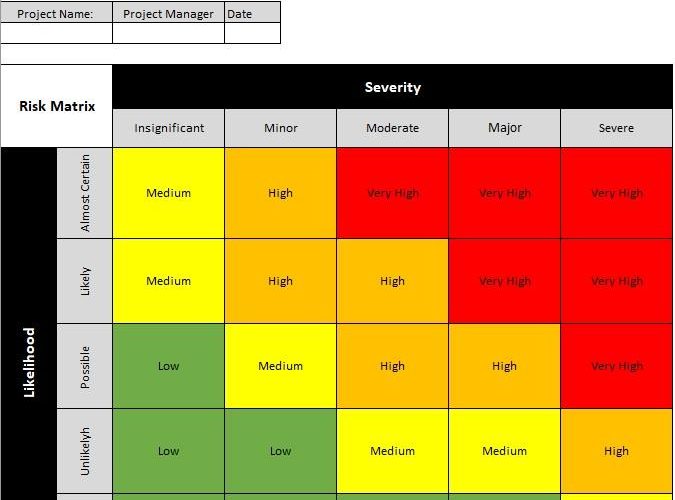In today’s increasingly digital landscape, remote project management has become not just a necessity but a fundamental aspect of how organizations operate. As teams span continents and time zones, project managers face unique challenges that can hinder productivity, communication, and overall project success. However, with the right strategies and tools, these challenges can be effectively navigated. This article delves into the key hurdles inherent in remote project management and presents a comprehensive array of best practices designed to optimize collaboration, streamline workflows, and enhance outcomes in a virtual environment. By leveraging these insights, project managers can not only overcome obstacles but also foster a cohesive team culture that transcends geographic boundaries, driving projects to successful completion regardless of the distance.
Table of Contents
- Establishing Clear Communication Protocols for Remote Teams
- Fostering Team Collaboration and Engagement in a Virtual Environment
- Implementing Effective Project Tracking and Reporting Mechanisms
- Building Trust and Accountability Among Remote Team Members
- The Way Forward
Establishing Clear Communication Protocols for Remote Teams
Effective communication is critical for the success of remote teams, and establishing clear protocols can make all the difference. Start by defining communication channels suitable for your team’s needs. Consider the following options:
- Email: Ideal for formal communication and documentation.
- Instant Messaging Apps: Useful for quick questions and updates.
- Video Conferencing: Best for project kick-offs and team meetings.
- Project Management Tools: Excellent for task assignments and progress tracking.
It’s essential to set expectations around response times and availability. This fosters accountability and ensures that team members know when to connect with each other. A simple table can help visualize these expected timelines:
| Communication Method | Typical Response Time | Best Time to Use |
|---|---|---|
| Within 24 hours | Formal communications | |
| Instant Messaging | Within 1 hour | Quick queries or updates |
| Video Calls | During scheduled meetings | Team discussions and brainstorming |
| Project Management Tools | Real-time updates | Task management and tracking |
By integrating these practices into your remote work routine, you’ll cultivate a collaborative atmosphere that enhances productivity and trust among team members.
Fostering Team Collaboration and Engagement in a Virtual Environment
Team collaboration in a virtual setting requires a strategic approach that nurtures engagement and communication among members. One effective method is to utilize collaborative tools that streamline project communication and foster transparency. Tools like Slack, Microsoft Teams, and Trello can create a centralized hub for discussions, file sharing, and project updates, ensuring everyone is aligned and informed. Establishing regular check-ins—whether daily stand-ups or weekly progress meetings—can help maintain momentum, encouraging team members to share updates and address challenges in real-time.
Additionally, promoting a culture of recognition and feedback can significantly enhance team morale and collaboration. Encourage team leaders to regularly acknowledge individual contributions and celebrate project milestones, which can be as simple as a shout-out during meetings or a dedicated channel for recognition. Incorporating team-building activities, even virtually, can also strengthen relationships and build cohesion. Here’s a simple way to structure team-building activities:
| Activity | Purpose | Frequency |
|---|---|---|
| Virtual Coffee Breaks | Casual interactions to build rapport | Weekly |
| Online Workshops | Skill development and teamwork | Monthly |
| Challenge Games | Fun competition to boost engagement | Quarterly |
Implementing Effective Project Tracking and Reporting Mechanisms
To ensure that remote projects stay on track, establishing a robust project tracking and reporting mechanism is paramount. Utilizing technology can simplify this process significantly. Platforms like Asana, Trello, and Jira allow teams to visualize project progress through user-friendly dashboards. Regularly updating project timelines and milestones helps in maintaining accountability and transparency. With features such as automated status updates and Gantt charts, teams can efficiently monitor tasks and deadlines, leading to better decision-making processes.
Additionally, regular reporting sessions should be integrated into the project lifecycle. These could be brief daily stand-ups or comprehensive weekly summaries, ensuring all team members provide input and feedback. Consider implementing the following practices for effective reporting:
- Standardized Reporting Formats: Create templates that can be used consistently across projects.
- Clear KPIs: Define key performance indicators to measure progress.
- Highlight Challenges: Encourage team members to discuss any roadblocks faced, leading to collaborative problem-solving.
| Reporting Element | Description |
|---|---|
| Current Status | Overview of project progress against the timeline. |
| Completed Tasks | A list of tasks accomplished since the last report. |
| Upcoming Tasks | Tasks scheduled for the next reporting period. |
| Risks and Issues | Identification of potential risks and ongoing issues. |
Building Trust and Accountability Among Remote Team Members
In a remote work environment, establishing trust and accountability is imperative for team coherence and productivity. A straightforward way to foster this environment is through clear communication. Utilizing tools like Slack or Microsoft Teams keeps everyone connected while ensuring information is shared promptly. Additionally, regular team meetings via video conferencing can help maintain personal connections, promoting transparency and openness among team members. Setting clear expectations around deliverables and deadlines creates a mutual understanding of responsibilities, reducing the likelihood of misunderstandings.
Moreover, recognizing individual contributions can significantly enhance trust within the team. Implementing a system for peer recognition allows team members to appreciate each other’s efforts, thereby reinforcing accountability. Consider employing tools like Trello or Asana to visualize progress, where each member can update their tasks and see real-time contributions from others. An effective recognition strategy could include:
| Method | Description |
|---|---|
| Weekly Highlights | Share accomplishments in team meetings. |
| Peer Kudos | Encourage team members to recognize each other’s work. |
| Achievement Badges | Assign badges for completing milestones. |
By integrating these strategies, remote teams can cultivate a culture of trust, allowing each member to take ownership of their roles while fostering collaborative accountability that drives project success.
The Way Forward
successfully navigating the challenges of remote project management requires a strategic blend of clear communication, robust technology, and a deep understanding of team dynamics. By adopting best practices such as setting well-defined goals, fostering a culture of collaboration, and utilizing the right tools, project managers can not only enhance productivity but also maintain team morale across distances. As remote work becomes increasingly prevalent, those who are adept at managing virtual teams will not only thrive but also set the standard for future project execution. Embracing these challenges as opportunities for growth and innovation will undoubtedly position organizations for success in an ever-evolving business landscape. Let us move forward with the insights shared here, ready to transform hurdles into stepping stones for achieving project excellence in a remote environment.






